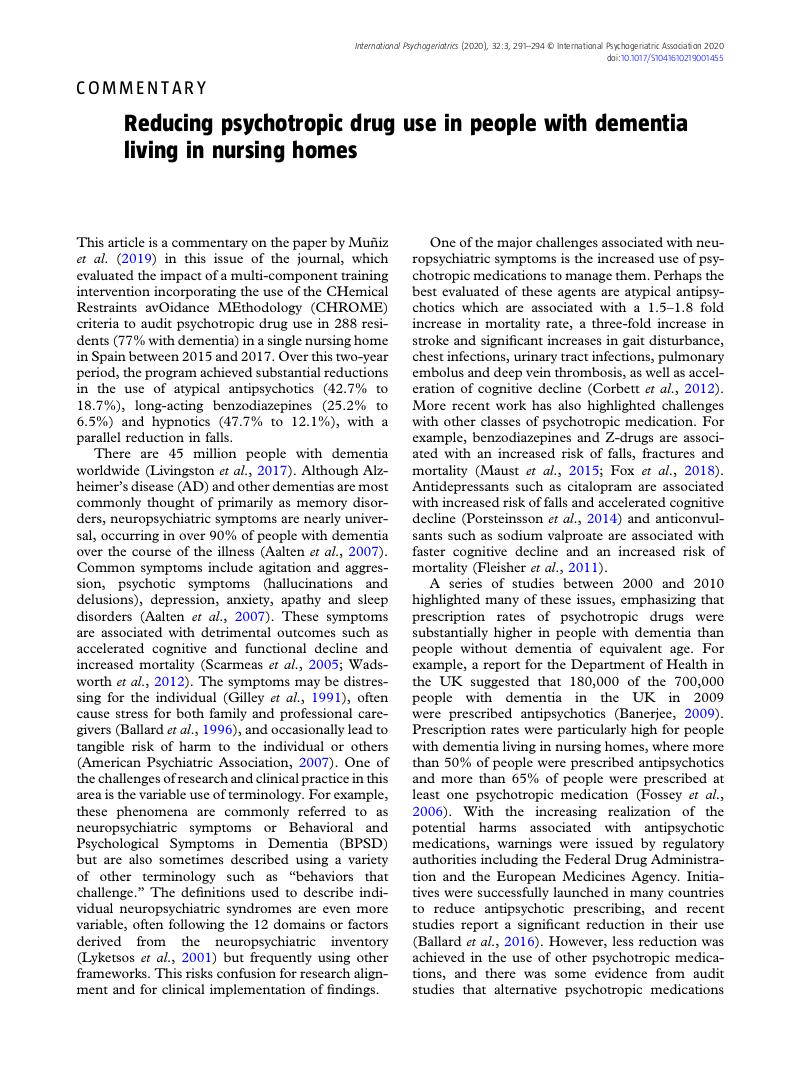Crossref Citations
This article has been cited by the following publications. This list is generated based on data provided by Crossref.
Jeon, Yun-Hee
Sawan, Mouna
Simpson, Judy
and
Brodaty, Henry
2021.
What is more important, the appropriateness or the rate of psychotropic prescription in aged care homes?.
International Psychogeriatrics,
Vol. 33,
Issue. 6,
p.
539.
Chadborn, Neil H
Devi, Reena
Williams, Christopher
Sartain, Kathleen
Goodman, Claire
and
Gordon, Adam L
2021.
GPs’ involvement to improve care quality in care homes in the UK: a realist review.
Health Services and Delivery Research,
Vol. 9,
Issue. 20,
p.
1.
Smeets, C.H.W.
Smalbrugge, M.
Koopmans, R.T.C.M.
Nelissen-Vrancken, M.H.J.M.G.
van der Spek, K.
Teerenstra, S.
Gerritsen, D.L.
and
Zuidema, S.U.
2021.
Can the PROPER intervention reduce psychotropic drug prescription in nursing home residents with dementia? Results of a cluster-randomized controlled trial.
International Psychogeriatrics,
Vol. 33,
Issue. 6,
p.
577.
Mulsant, Benoit
and
Pollock, Bruce
2022.
The American Psychiatric Association Publishing Textbook of Geriatric Psychiatry.





